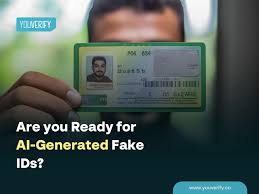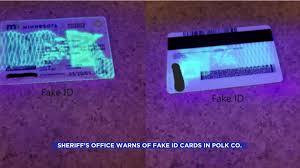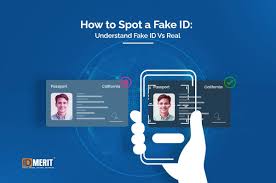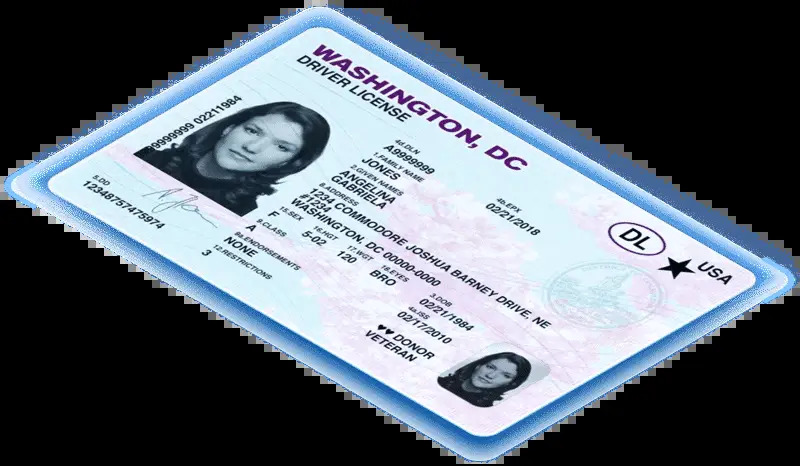scannable ids
How do scannable fake IDs work? You may be wondering if any ID in front of you is real. Or you may be holding a fake ID and want to understand how it scans.
Next, we will discuss the situations in which fake IDs may appear when using ID scanning software.
Before answering this question, it is important to understand how ID cards store information. One of the most critical features in modern ID cards and driver's licenses is the PDF417 barcode.
This text contains a lot of information, such as:
name
address
date of birth (for age verification)
height
weight
All of these fields are classified as personally identifiable information (PII), which is information that can be used to identify an individual. The vast majority of ID card scanning solutions and hardware use 2D barcodes to verify age and identity. In addition, 2D barcodes are also used to parse ID information into software such as customer relationship management systems (CRM) or point of sale systems (POS) because each field can be uniquely identified.
By scanning the 2D barcode on the back of the ID card, the ID card scanning software can instantly read the personal identification information, verify whether the date of birth matches today's date, and check the ID card's expiration date.
In addition, the popularity of ID card scanning solutions has made commercial organizations more efficient and secure in customer identity verification. In many fields, such as finance, travel, and healthcare, accurate identity confirmation is crucial. Therefore, the use of ID card scanning technology can significantly reduce the risk of identity theft and fraud.
In addition to basic identity verification, many modern ID card scanning software also have other value-added functions. For example, they can be combined with artificial intelligence and machine learning technologies to analyze and identify potential suspicious activities in real time. In addition, these systems can automatically update customer information, improve customer experience, and enable companies to better manage customer data.
Many countries and regions have enacted strict laws and regulations on personal information protection, so it is particularly important to ensure data security and user privacy when using ID card scanning technology. Companies should take necessary security measures, such as data encryption and access control, to prevent data leakage and unauthorized access.
In summary, ID card scanning technology not only improves the efficiency of identity authentication, but also plays an important role in promoting business operations, improving security, and ensuring user privacy. With the continuous advancement of technology, it is expected that more innovative solutions will emerge in the future, bringing greater convenience and security to various industries.
Sample back of ID card, with a 2D barcode on the bottom.
Most ID cards also have a 1D barcode that contains the state code and ID number. While some ID cards still have a magnetic stripe, this symbology is considered less advanced and many states are phasing it out.
What does it mean when a fake ID is "scannable"?
A fake ID is considered "scannable" if it can be scanned by 2D barcode scanning or parsing software. Therefore, all that is required to make a scannable fake ID is that the barcode format be readable. This is relatively simple.
Fake ID makers can use an existing ID card with a valid barcode and add new information to the front of the ID card. Alternatively, they can copy a known valid barcode. Another method is to reverse decode an existing barcode and then reconstruct the barcode with the desired personal information.
Here are three simple, common methods to easily create a scannable fake ID. Since it is very simple to generate a scannable PDF417 barcode and ID scanning technology is fairly common today, almost all modern fake IDs can be scanned. The fake ID information stored in the barcode will be parsed and populated in the same way as a real ID.
2D Barcode Security Inspection
Recent advances in AI have allowed us to perform checks directly on barcodes to look for “easter eggs” that could indicate a fake or suspicious ID document. Here are some general examples:
In Idaho, they use the code “BWN” to indicate that the holder has brown eyes. If we scan an Idaho ID that uses “BRN” in the eye color field, that’s a good indicator that the ID is fake.
Different states store ID information in different orders. Some states may store first name, then last name; others may store last name, then first name. We know the correct order for each state so we can flag IDs that don’t conform to the standard data format.
Since we process hundreds of thousands of IDs per month through our ID scanning software, we train our AI to recognize patterns in 2D barcodes and spot these tiny flaws. Our software performs hundreds of 2D barcode security checks on every ID scanned, allowing us to identify some fakes even without authentication hardware.
Matching Data on the Front and Back of an ID Card
Almost as important as the PDF417 barcode is all the information printed on the front of the ID card. On a legitimate ID card, the information stored in the PDF417 and 1D barcode should match the information displayed on the front of the card. This is also another way to identify fake ID cards.
When criminals sell fake ID cards, they obviously want to promote them as "scannable fake ID cards" because without this feature, these ID cards have little value. Therefore, when these "makers" forge fake ID cards for others, they usually purchase real ID cards that have PDF417 and 1D barcode information encoded on them. They simply reprint the information on the front of the card to match the fake ID buyer, who is often a minor.
So, how do you tell if the information doesn't match? This involves the application of ID card scanning technology. By using an ID card scanner, a business can read the information encoded in the barcode and obtain the data on the front of the ID card at the same time. With optical character recognition (OCR) technology, the software compares the photo and characters on the front of the ID card with the information encoded on the back. If this information does not match, then the ID card is almost certainly a counterfeit.
Front-to-back matching is a method of identifying low-quality counterfeit ID cards that simply reuse existing 2D barcodes.
UV and IR light inspection
In addition to the barcode vs. OCR comparison, another security feature that is more difficult to forge is the addition of UV markings to ID cards. UV security features are specifically designed to hide state-specific text and images that are only visible under certain lighting. Scanning is done using infrared, UV, and white light.
Scanners like the E-Seek M500, paired with our software, can scan ID cards under three different wavelengths of light to check if these security features are present. If the scanner/software fails to detect the UV ink, then the ID card is likely counterfeit.
Hologram and anti-counterfeit watermark inspection
A hologram and/or watermark can be used as a final test to verify the authenticity of an ID. This feature creates a three-dimensional effect on a flat surface. To achieve this effect, the image is created using nanostructures that refract light in a specific way, making a two-dimensional image appear three-dimensional. Since this technology can only be done on highly specialized laboratory equipment, it is very difficult for criminals to forge this feature.
That said, it is possible to create a simple hologram, but it involves a combination of hardware and software. The E-Seek M500 can take a detailed look at the hologram using the UV light mentioned earlier. This, combined with our software, can tell if the hologram does not match the hologram required by a particular state.
Scanned results for a fake ID
How well a fake ID scans depends entirely on the quality of the ID. Many fake IDs use low-quality barcodes, so they can be identified with a simple scan. Some more complex fake IDs may require the use of ID authentication technology to detect them. Typically, once the ID scanning software finds anything suspicious, it will pop up a prompt to the merchant to recommend additional verification.
Below are examples of pop-ups within VeriScan that alert merchants to fake IDs.
Catching a Fake ID
Fake ID Alert Pop-up VeriScan for Windows
If there is a barcode on the ID, the software will try to extract as much information from the barcode as possible. However, many barcodes are not formatted correctly, and information such as "eye color" or "address" may be incorrectly displayed in the last name field. VeriScan software can easily identify these errors to alert the customer that the ID is a fake.
Many counterfeit ID manufacturers claim to sell "fake IDs that scan," but they only guarantee that the barcode will work. They do not guarantee that the barcode will correctly match the fields to fool the ID scanning software.
If you would like to learn how flamingtorchnola.com can help you protect against the use of fake IDs, be sure to contact our industry experts.
 Nevada Fake ID
Nevada Fake ID
 fake Alaska ID
fake Alaska ID
 Missouri Fake ID
Missouri Fake ID
 fake Connecticut ID
fake Connecticut ID
